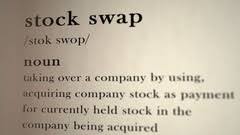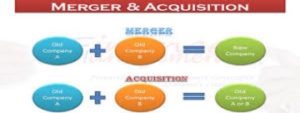How much do you really know about Merger Arbitrage Trading?
Is this event driven strategy suitable for individual investors?
Merger Arbitrage Limited is here to help answer these questions and a host of others. We’ve put together this guide with real life merger arbitrage investment examples to explain the vital elements of how to profit from merger arbitrage trading. Along the way, feel free to refer to our comprehensive definition of Merger (Risk) arbitrage or use our in-house finance & investment Glossary. We’ll give you all a solid base from which YOU can go on to be the next Merger Master!
Introduction
Merger arbitrage, risk arbitrage, event driven trading… everyone’s heard of it. Maybe you’ve just seen Kate Welling’s book “Merger Masters: Tales of Arbitrage” and would like to know more about how to profit from merger arbitrage trading?
This perennial investment strategy has been a mainstay of and event driven hedge funds and investment managers since the takeover boom that started in the 1970’s. Yet it has continued to intrigue and inspire traders and investors ever since. Like most investing, arbitraging can be as difficult or as simple as you want it to be. But unlike traditional investing, merger arbitrage has a binary outcome. The values of which can be calculated in advance. It’s up to the arbitrageur to assign a risk to these outcomes.
The Aim of Merger Arbitrage
The basic aim or goal of merger arbitrage is to profit from the deal spread that arises following the announcement of a merger or acquisition (M&A).
An Example of How to Profit from Merger Arbitrage
Here’s a simple merger arbitrage example. Company A (the acquirer) wishes to buy company B (the target). This might be in order to expand its existing operations into a new geographic sector. It could be because of some corporate strategy initiative or even just to exploit an accounting loophole. In a straight forward all cash offer, Company A will offer a fixed amount to Company B for each of its shares, for example $80. If the shareholders of company B vote in favour of the buyout, all shareholders will receive the cash amount offered. These investors are then free to reinvest their capital or enjoy those funds as they wish. As Company B is going private, it will cease to exist as a public entity.
The Risk
During the time between deal announcement and the closing of the deal there is a degree of uncertainty regarding whether or not the deal will close successfully. This uncertainty comes from a number of sources such as (but not limited to)
In light of these influences, the share price of company B might not rise up to the price offered by company A. For instance, it may instead trade at around $75. Professional arbitrageurs (“arbs” as they are known) use their skill and know how to assess the likelihood of a deal completing and what the final terms will be. If the arb discerns the potential rewards are worth the risk, the arb buys stock in company B. If the deal closes, the arb exchanges those shares for the cash being offered by company A. Thus making a $5 profit per share. The $5 difference is known as the “spread” or discount. Real life examples of current deal spreads can be seen in our merger arbitrage spread tracker.
How to Profit from Merger Arbitrage

The spread is the opportunity the “arbs” use to profit from merger arbitrage. Occasionally, the stock price of company B may rise above the offer price as the market anticipates a higher bid from the company A in order to secure approval for the deal. Alternatively, if there is an alternative suitor, company C, which also wants to buy company B, a bidding war may ensue. This could drive the stock price of company B to dizzying heights and produce a huge windfall for the arbitrageur. Although these situations are rare, they are what every arb dreams of coming to pass.
How do you lose money?
If the deal does not complete, company B continues to be a public company. The share price will most likely fall back to its pre-deal announcement level (adjusted for any market movements, company specific announcements, dividend payments etc). This would hand the arbitrageur a potentially damaging loss. This loss will be far in excess of what could have been gained through successful completion of the deal.
So is it worth it?
Well that depends on the arbitrageur. As stated previously, the arb uses their skill to decide in which deal to invest. By choosing those deals that have a higher deal closing probability than the market realizes, the arb is able to generate positive returns. Of course, sometimes deals will “blow up” for unforeseen circumstances. Controlling exposure to any one deal and employing effective risk management practices such as diversification reduces losses. In which case, a deal failure is unlikely to be fatal to the investment operation.
Risk arbitrage has often been described as
“picking up nickels (or pennies, dimes) in front of a steamroller”.
In other words, you will expect to make many small gains when deals consummate successfully, but eventually succumb to the occasional large loss. If positions have not been recklessly increased with leverage, and the trader has not been greedy and diversified appropriately, these occasional losses can be sustained in the normal course of a trading business.
Other Payment Forms of Merger Arbitrage – Stock Offers
- to avoid having to use existing funds – company A may wish to maintain its current cash levels
- difficulty raising new capital in the debt markets
- may not want to increase balance sheet leverage as loan convenants may require a consistent debt ratio
In this case, company A can use its own stock as a form of payment. Management often uses this form of payment if they judge their own stock price is relatively high. However, the debate on this type of analysis, known as Signaling Theory continues to be inconclusive as to whether this act contains any useful information. This style of takeover is slightly more complex than a simple cash deal but we’ll work through an example to illustrate the point.
Company A wishes to buy Company B for $80 a share. If company A’s stock price is $40, company A may decide to offer 2 of its shares for each share of company B. In this case, the “2” is known as the offer, or exchange ratio. This information can be found in the merger agreement filed with the SEC, or the press release issued at the time of the merger announcement.
An additional consideration
However, there are additional risks of deal failure to those mentioned earlier. Shareholder approval from company A’s stockholders may be required if the new shares issued are beyond a certain threshold. This dilution of control caused by the issuance of a large number of new shares may incite existing shareholders of company A to vote against such a deal proposal. This prevents the deal from moving forward. In addition to the stock dilution, the market weighs whether or not the deal will prove to be profitable. Company A could be at risk of over paying following the large capital outlay to purchase company B. This uncertainty will cause the stock price of the acquirer to decline following the announcement of a deal. This gives additional encouragement to existing shareholders to argue against the deal.
So how do Arb’s profit from this scenario?
The actions needed to profit from stock swap deal require an additional step compared to a simple cash deal. As company B’s stock rises towards the $80 offer price and arb would buy 1 share of the target for perhaps $75 as before. In order to hedge to value of the offer, the arb must ALSO short 2 shares (the offer ratio) of company A at $40. If the offer succeeds, the arb relinquishes his share of company B for the 2 shares of company A. These shares will offset the short position. The arb is left with a net stock position of zero in both companies. The cash flow at the time of the trade is as follows
1 (long share company A) * -$75 + 2 (short shares company B) * $40 = $5
Note how the long position will result in a debit (negative) and the short position will result in a credit (positive) cash flow. Thus, the maximum profit available to the arb is $5. A free spread calculation tool which can make these calculations is available for FREE on this website.
One more thing
In order to short the stock of company A, the arb must be able to borrow the stock from the broker. This is usually a seamless endeavor. The broker will locate available stock for borrowing and the arb will sell the stock as if it was their own. There will of course be an ongoing fee charge for this service which is a small percentage of the transaction value. Whilst the short position is maintained, this cost may add up to a significant charge if the deal drags on for a long time. Naturally, this will have a negative effect on profitability. We have previously written an article on Deal Extension Risk.
And the Risk?
Despite the acquirer stock price frequently declining once having made an offer, the acquirer stock should only ever be shorted by the amount of the exchange ratio offered. Any deviation from this number would not be considered true merger arbitrage and may involve speculation. Shorting a stock when not required to do so incurs additional risks outside the parameters of this strategy.
The risk, i.e. the potential $ loss in this example, is also a little more complex. Firstly, the stock of the target (company B) falls to the pre-deal announcement price (known as the floor price) or perhaps further than that. Secondly, the stock of company A may rise causing a loss on the short position. The absence of the deal no longer causes the risk of overpaying for the target as previously discussed. In addition, there will be a rush of other arbs exiting their positions. A large buying wave of the company A stock they have shorted causes a temporary liquidity imbalance. This imbalance of buyers versus sellers can cause the stock price of company A to rise substantially. This may cause the aggregate losses of both positions to be larger than expected.
Even More Risk
A bidding war in this stock offer example will also complicate the P&L calculation. Arbs continue to make excess profits holding the stock of company B, but will incur a loss on company A. For instance, if company C wins the bidding war for company B, the deal with company A has failed. Therefore, the stock price of company A increases (as discussed in the previous paragraph). This causes a loss for the arb on that particular leg of the trade. This will not be enough to make the trade a losing proposition but the arb must still be aware of this additional risk. For a real life example of a stock offer readers are encouraged to read A Primer on Calculating Stock Based Merger Arbitrage Spreads – Barrick (ABX) – Randgold (GOLD) which explains this type of deal in greater detail.
Additional Payment Types

The Results
In both payment examples (cash and stock), the arb makes money as long as the deal closes and the merger consideration is paid. The timings of the cash flows will be different for each example, but the end result is the same. A profit. This figure can then be annualized to enable comparisons with other investments or incorporate the risk free rate. For the sake of simplicity, we have omitted the effect of interest rates in the following calculations. Readers can learn more about these effects of profitability in our article “Merger Arbitrage and Interest Rates – A Guide to Enhancing Profitability“.
For example, in our cash deal scenario the return on the investment is
$5 / $75 = 6.67%
Therefore, if this deal completes in 6 months, the annualized the rate of return becomes
(1 + 6.67%) ^ (12 / 6) – 1 = 13.78%.
But what If the deal closing period is extended and the deal takes 9 months to complete? The return will then be reduced to
Conclusion
Arbitrageurs are not obligated to invest in a given deal and can pick and choose their investments. This gives them an advantage. There will always be existing stockholders who do not want to risk holding their stock following a deal announcement. They prefer not to collect the deal spread when they have already profited handsomely from the initial rise in the stock price following the deal announcement. Arbs assume this deal closure risk and supply liquidity. They can choose to buy the target stock at a price which appeals to their own risk/reward profile.
We have shown individual traders and arbitrageurs how to profit from merger arbitrage. This strategy can be employed without having to go through a hedge fund of mutual fund charging management and performance fees. There are ETF’s covering this strategy but they have their shortcomings which may not fit an individual’s risk profile. These shortcomings are discussed here in a separate article. There are of course additional caveats to this strategy which have not been covered in this introductory text. The reader is encouraged to explore additional strategy articles on this site to gain a deeper understanding of merger arbitrage. We recommend 10 Merger Arbitrage Myths as a great starting point.
Advanced traders may choose to enhance their merger arbitrage strategy by using derivatives which we have covered comprehensively. These strategies may simultaneously increase or reduce risk if used erratically. They should only be used once a solid grounding in the subject has been established.
Further Reading
Merger Arbitrage Limited also provides a comprehensive book list. This is aimed at traders of all levels looking to expand their knowledge and understanding of the markets. We also have a list of the most cited academic works on the subject of merger arbitrage.
Finding this information useful? Here's what you can do to help...
- Share this page using the toolbar links at the left of your screen or at the bottom for mobile users on your preferred social network
- Sina Weibo
- Twitter etc.
- Follow us on twitter @MergeArbLimited.
- Become friends with us on Facebook
- Register for news alerts and merger arbitrage deal analysis postings via email using the sign up form.
- In addition to these, an RSS feed is also available at the bottom right of the page.
- Contact us using the details given on the Contact Us page.
- Donate using the paypal widget in the sidebar. It’s gladly appreciated and we need the coffee! See the Paypal section for additional incentives
- Share this page using the toolbar links at the left of your screen or at the bottom for mobile users on your preferred social network
Thanks for reading!








